
The relationship between the urban landscape and painting has been a recurring theme throughout the history of art. As far back as antiquity, artists have found the city to be an inexhaustible source of inspiration for their works. Painting has recreated this space where life is so concentrated, its environment, its architecture, and its impact on society.
Because of this, even though we sometimes don’t notice it, there is an invisible thread that connects some of Ferrovial’s most significant projects with elements of engineering and art. The fact is that the connections between these disciplines are often closer than they may seem at first glance.
In this blog post, we will take a look at how art has reflected different elements of civil works throughout history. We will also analyze the most representative works present in museums that are related to our company.
The mark museums have left on society
Nowadays, museums have taken on a fundamental role in preserving and sharing artistic heritage. Thus, interventions at museums are essential to ensuring the conservation of works of art.
One example we can identify is at the Thyssen, where Ferrovial was responsible for renovating the building’s roof. In addition, the company carried out remodeling on the facade with the aim of improving its appearance and its conservation.
At the Prado, we restored several rooms and installed an air conditioning and lighting system to improve the conservation of the works of art. Lastly, at the CaixaForum, we built a new building adjoining the existing one that covers more than 2,000 square meters; this enables the museum to host larger exhibitions and expand its cultural selection.
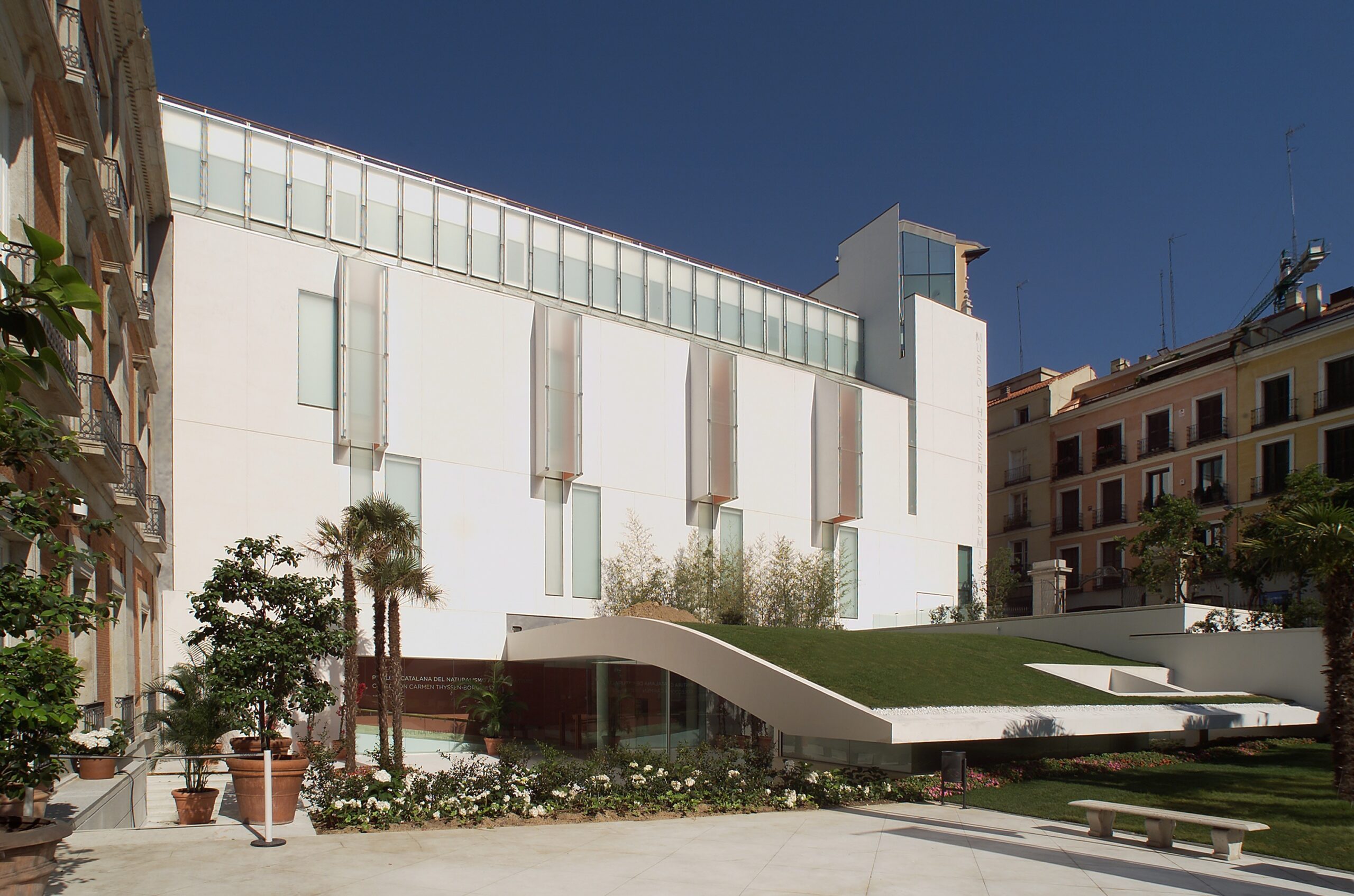
Thyssen-Bornemisza National Museum
A star feature
Infrastructure that combines civil works and art and which has also been a central theme in painting for centuries is the bridge. Bridges are functional monuments that span barriers and shorten distances. They also symbolize a society and an economic tool.
If we see a bridge as an icon of civil engineering and from a technical perspective, we can talk about calculating structures, topography, and even technological achievements that it must overcome geotechnical, design, urban planning, legal, organizational, and even environmental and landscape issues. A bridge is the result of detailed planning and expert execution.
However, seen through the eyes of an artist, the bridge and its surroundings become a potential subject for a painting since they form a visual element that is of great suggestive and metaphorical capacity. Artistic and technical legacies come together in bridges, and often, the paintings that illustrate them are the only witnesses of engineering works that have already disappeared, as well as of their renovations and the evolution of construction techniques throughout history.
Bridges in painting
The first great example of a representation of a bridge as a part of civil work taking center stage in a painting is found in the Italian veduta of the 18th century. Prior to that, during the Middle Ages, representations of bridges were generally made up, and these only appeared as an anecdotal or secondary element.
The Italian veduta, however, is a pictorial genre where the artist depicts a city in a highly detailed way. The paintings in this genre were like postcards that travelers bought as a souvenir when they toured major European cities. The Thyssen and Prado museums are home to good examples of this style.
One of them is “Porta Portello, Padua” by Giovanni Antonio Canal, who is known as Canaletto. It is a masterpiece of urban painting from the 18th century. The artist’s ability to capture light, atmosphere, and perspective makes it a unique work in representing a city that was an important cultural and commercial hub of Italy, known both for its universities and its artistic heritage. Canaletto illustrates the bridge as an imposing structure that connects different parts of the same city or country.
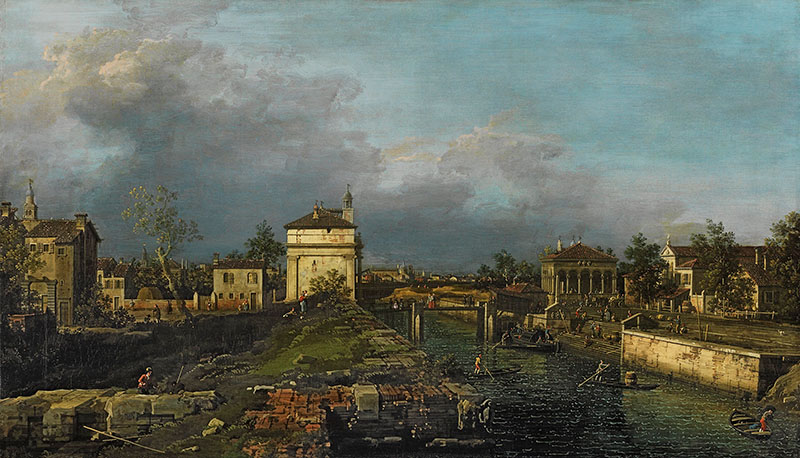
“Porta Portello, Padua” (ca. 1760). It is on display at the Thyssen-Bornemisza National Museum.
Canaletto, who was known for his urban depictions of Venice, not only painted but also taught other artists. Among his students was his nephew, Bernardo Bellotto, author of ”Capriccio with a River and Bridge.” This is an example of another modality of urban painting that is usually called a capriccio, which is characterized by placing real pieces of architecture in the same composition (changing their location) and others of a more imaginative nature against a landscape background. Still, there was significant veracity on the whole.
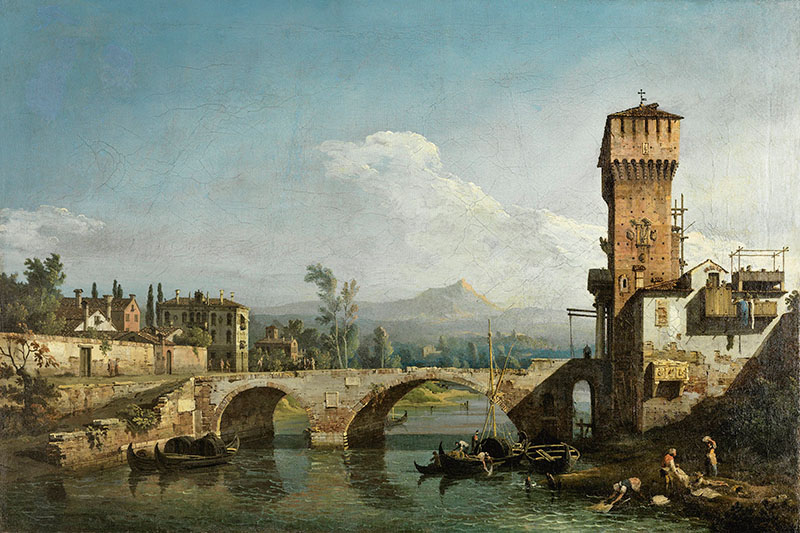
“Capriccio with a River and Bridge” (ca. 1745) can be seen in the Thyssen-Bornemisza National Museum.
While these urban views captivated some parts of Europe, in Spain, Goya painted “Dance on the Banks of the Manzanares.” This scene illustrates majos and majas (commoners) dancing a regional folk dance called the seguidilla, and it accurately reflects the area around the Pontones bridge. It is part of the series of ten country-themed tapestry works intended to decorate the dining room of the Princes of Asturias at the Royal Palace of El Pardo.
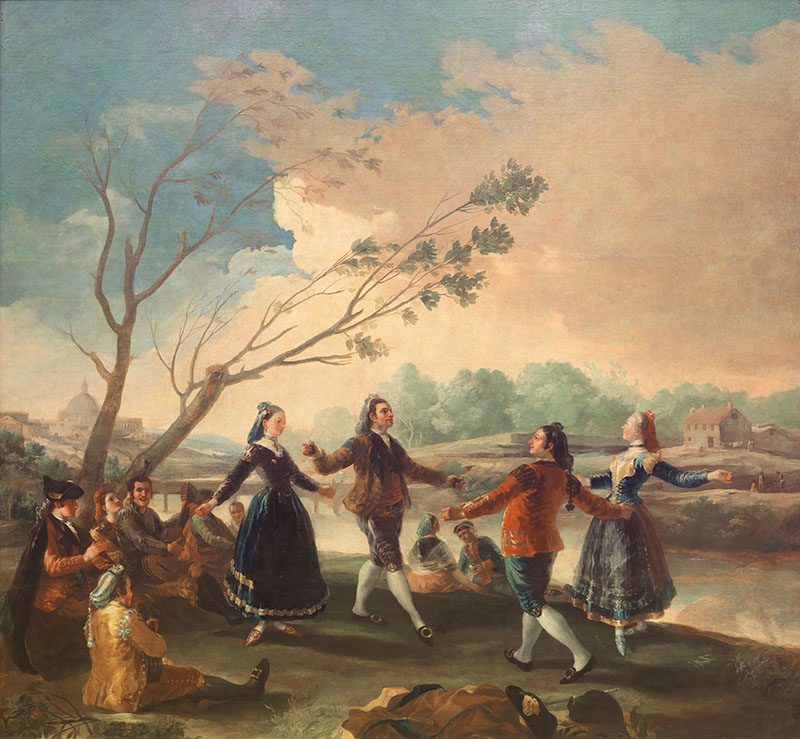
“Dance on the Banks of the Manzanares” (1776 – 1777), on display at the Prado National Museum.
Another example is “View of the Bridge at Martorell,” painted at the end of the 18th century by Mariano Sánchez. It is part of a series of 118 views of Spanish ports, bays, bridges, and islands commissioned by Charles IV when he was Prince of Asturias. The work depicts a Roman bridge renovated in the Gothic style and restored in 1768. In this painting, the artist copied the French idea of publicizing the economic boom by illustrating public works.
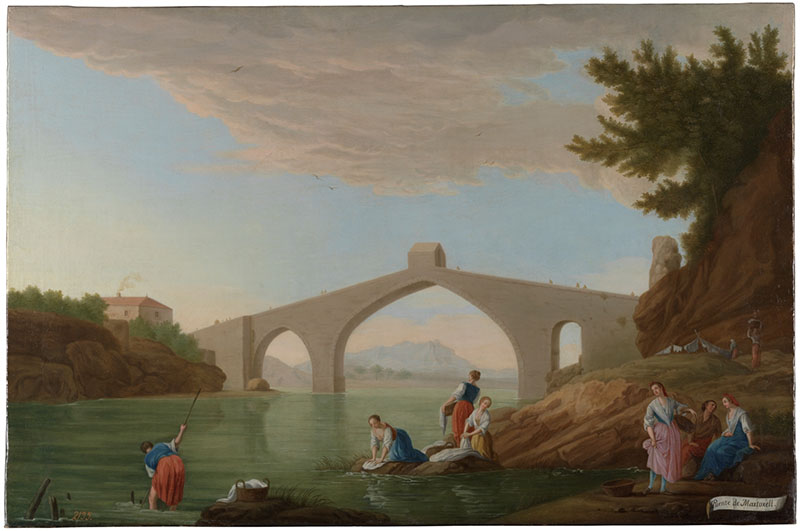
“View of the Bridge at Martorell” (1787) is also on display at the Prado National Museum.
Technical progress after the Industrial Revolution
After the Industrial Revolution kicked off, technical progress in public works became the stars of canvases. In Spain, for example, they depicted railway line openings. In Europe, we’ve seen highly innovative new artistic movements focused on the effects of light, where paintings with bridges were common.
We see this in André Derain’s “Waterloo Bridge,” a masterpiece that belongs to a series painted in London for a Parisian dealer, who managed to acquire almost all of the painter’s output. It was intended to emulate Claude Monet’s series of paintings on the River Thames. The main motif is the old Waterloo Bridge in a bright blue color. Its horizontal structure serves as a horizon line.
Derain left his engineering studies to become a painter. He was influenced by great masters like Cézanne, Vincent van Gogh, Matisse, and Turner, and he himself influenced such notable artists as Dalí. This painting uses pointillist techniques that give the surface a mosaic look. The use of pure colors, however, is attributed to the Fauvist aesthetic, where color serves to express emotions.
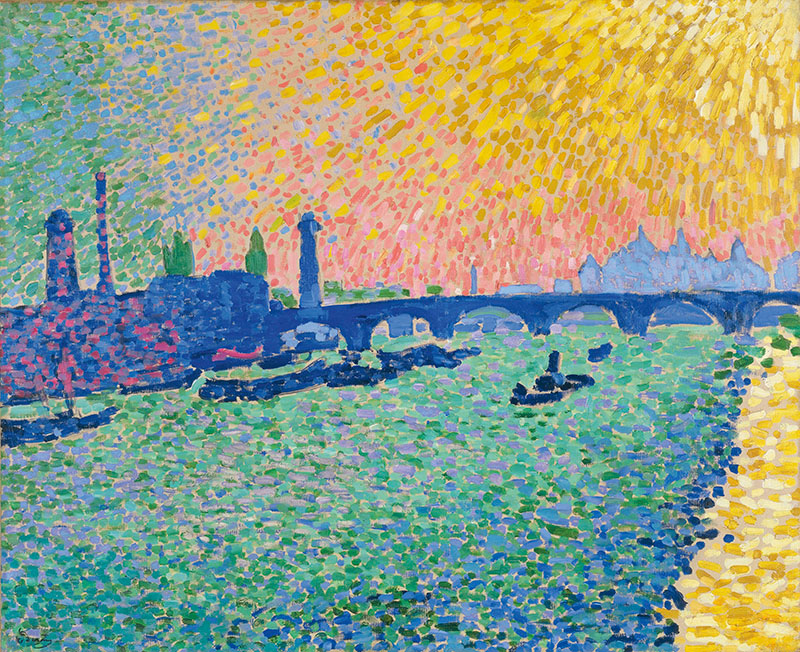
“The Waterloo Bridge” (1906) is on display at the Thyssen-Bornemisza National Museum.
Another leading protagonist of the Parisian avant-garde was Fernand Léger. Trained as an architect, he moved to Paris to work as a draftsman. There, he witnessed the development of industry, which was reflected in the urban landscape of the city. In his work “The Bridge,” the elements appear simultaneously and abstractly, like Meccano pieces that must fit into this new modernity.
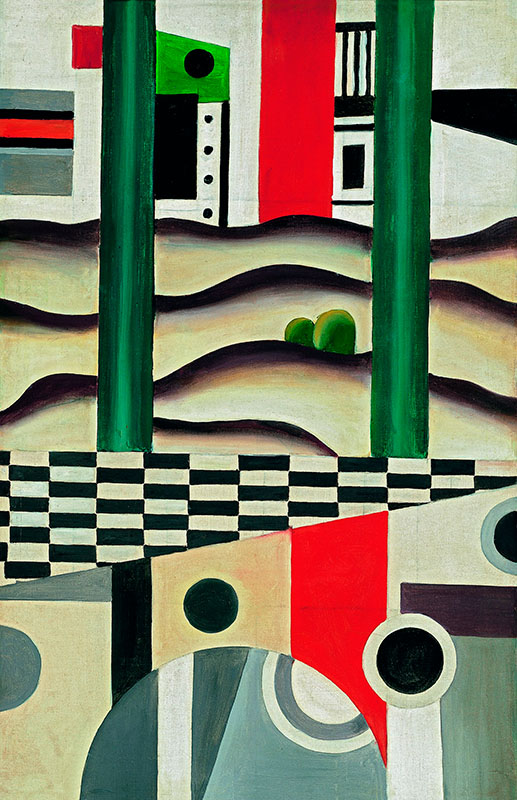
“The Bridge” (1923) is also at the Thyssen-Bornemisza National Museum.
One of the most recent examples of an artistic representation of a bridge is Paul Delvaux’s “The Viaduct.” In this painting, the artist once again captures a theme that recurs through all his work, as did stations and railways. Delvaux was one of the main figures of surrealism in Belgium. This painting is one of the centerpieces of the temporary exhibition “The Occult in the Thyssen-Bornemisza Collections,” which invites us to see paintings from fresh perspectives to make new readings.
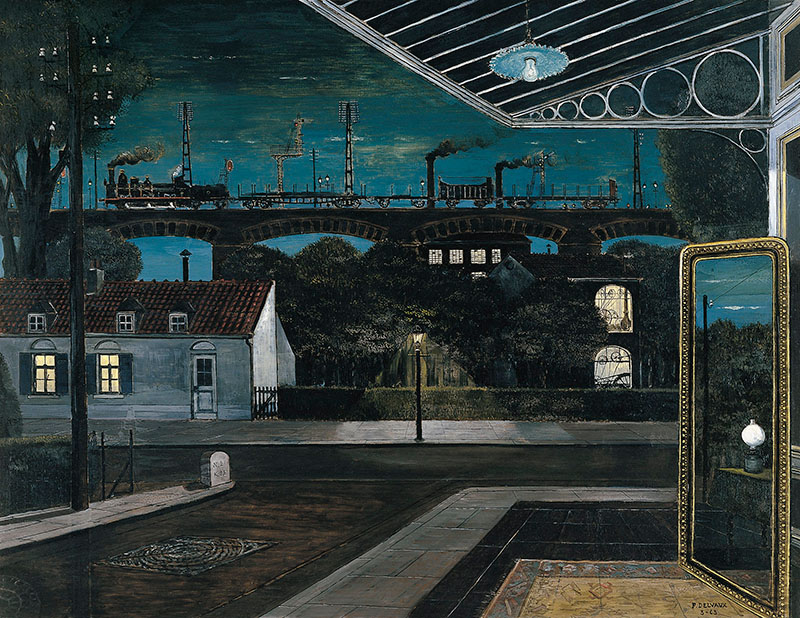
“The Viaduct” (1963) is part of the temporary exhibition “The Occult in the Thyssen-Bornemisza Collections,” on display until September 24.
I can’t conclude this journey through some of the paintings at Madrid’s main museums without mentioning the exhibition “60 Views of Ferrovial” by José Manuel Ballester, which took place in June 2013 at CaixaForum to mark the 60th anniversary of our company.
It allowed us to enjoy images of airports, highways, and ports that unite the ideas highlighted from the beginning of this article: the value of engineering, infrastructure, and civil works in an artistic representation. Take this last image as an example:
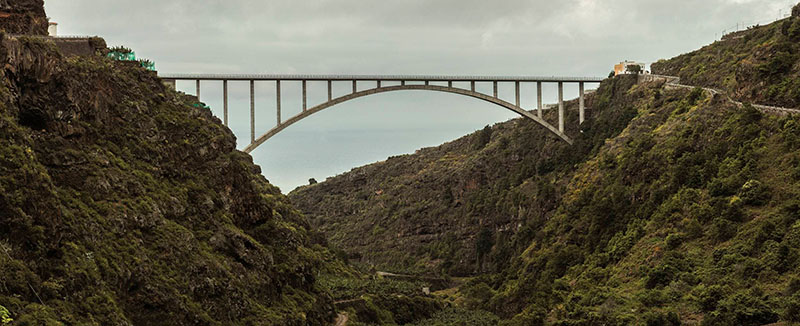
It brings together the planning, design, and construction along with the artist’s ever-unique perspective. It is the Los Tilos Arch Bridge, located on the island of La Palma in the Canary Islands. This is one of our most interesting projects and my personal favorite.





There are no comments yet